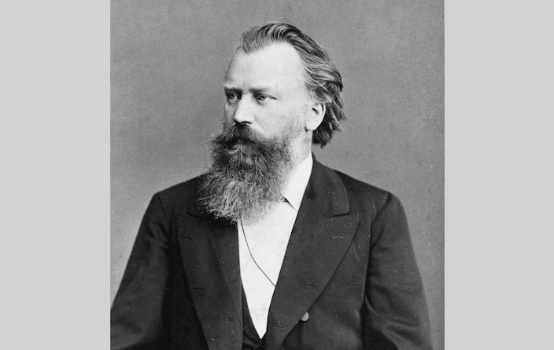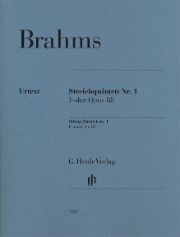A quintet with a Mozartian character
A mature masterpiece reissued, with special attention to the last phase of its creation.

"Spring" is the name of the association that Brahms' contemporaries, namely Clara Schumann, had with this quintet. Even Hugo Wolf, who was otherwise dismissive of Brahms, found himself "in a free, sunny meadow, in which it was quite glorious at the hand of the knowledgeable composer" at the sound of the first movement. Johannes Brahms had already tried his hand at the string quintet genre in 1860, a good twenty years earlier, at that time with two cellos. This resulted in the Piano Quintet in F minor op. 34a and the Sonata in F minor for two pianos op. 34b.
In the spring of 1882, in Bad Ischl, he felt completely at home with the genre, in its Mozartian style with two violas. The result is a masterpiece which today takes its place alongside Wolfgang Amadeus Mozart's string quintets. Barely out of print in January 1883, it was performed by renowned ensembles and enthusiastically received by audiences in several musical metropolises. Its perfect form and cheerful character, which is only replaced by elegiac or dramatic passages in a few places, probably contributed to this unique triumph. The formal experiment of combining the slow movement with the scherzo is also original: three grave sections (quoting an early piano sarabande) frame two fast 6/8 or alla breve sections, also an earlier gavotte for piano by Johannes Brahms.
Kathrin Kirsch, Professor of Musicology in Kiel and supervisor of this Urtext edition, has already made a name for herself as a Brahms specialist in earlier publications. In this publication, she paid particular attention to the late stage of the work's creation, from the engraver's model to the first print. Preliminary proofs, i.e. printed proofs of a work before the production and distribution of the edition print, allow conclusions to be drawn about Brahms' working methods in this late phase of creation. Handwritten entries show how he differentiated compositionally and standardized the musical text editorially. Kathrin Kirsch documents the fact that the editor Robert Keller and the publisher Fritz Simrock also played an important role in this process for the String Quintet No. 1 in F major op. 88 by means of numerous passages from letters.
This Urtext part material is not only excellently researched and annotated, it is also easy to read thanks to its large format and eye-friendly typeface. A technical arrangement with fingerings and bowings has been dispensed with. To avoid panic when turning pages, the first and second movements are printed on three adjacent pages. This makes rehearsing and performing this technically demanding but beautiful work much easier!
Johannes Brahms: String Quintet No. 1 in F major op. 88, edited by Kathrin Kirsch, Parts: HN 1482, € 35.00; study score: HN 7482, € 12.00; G. Henle, Munich








